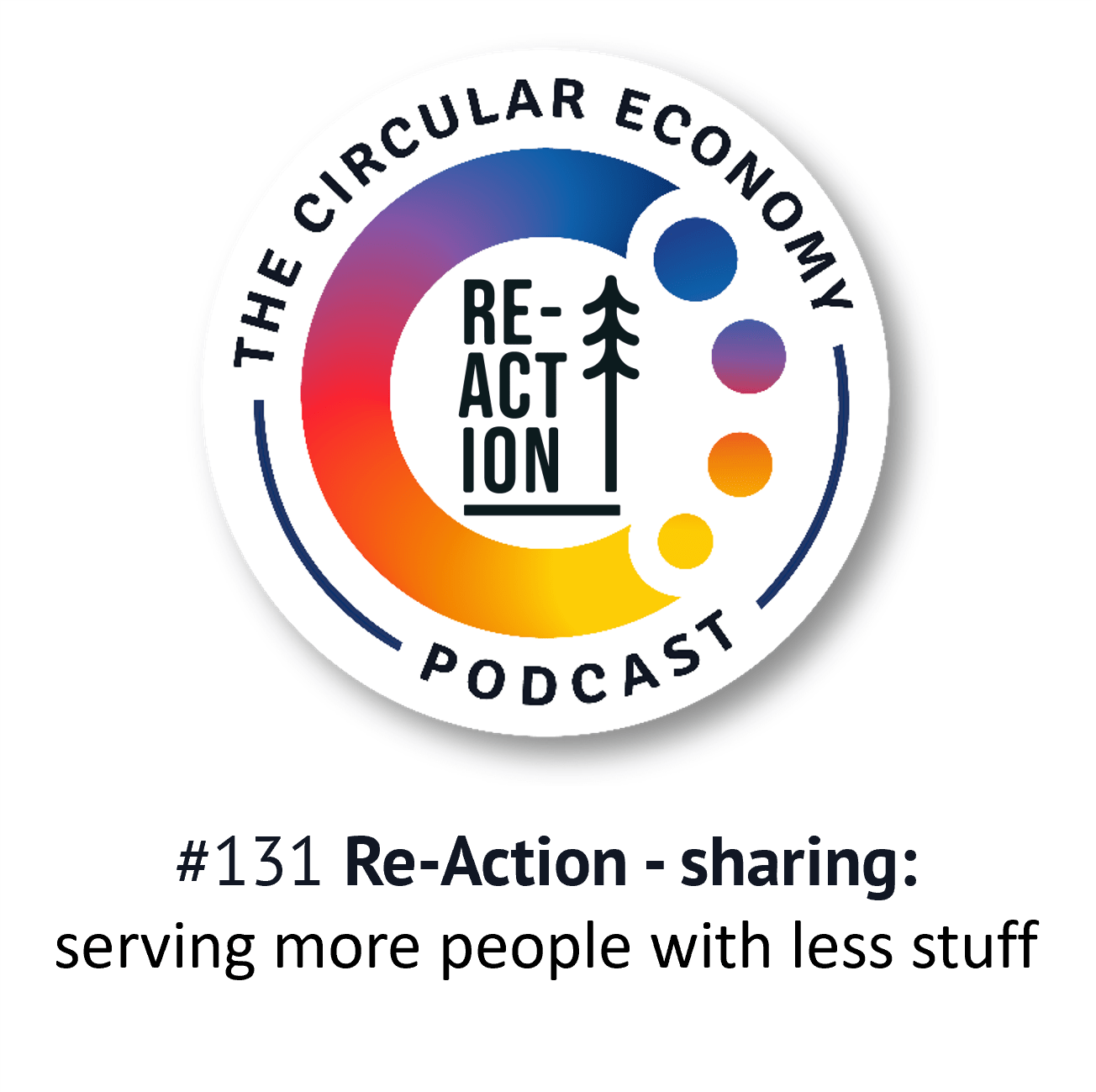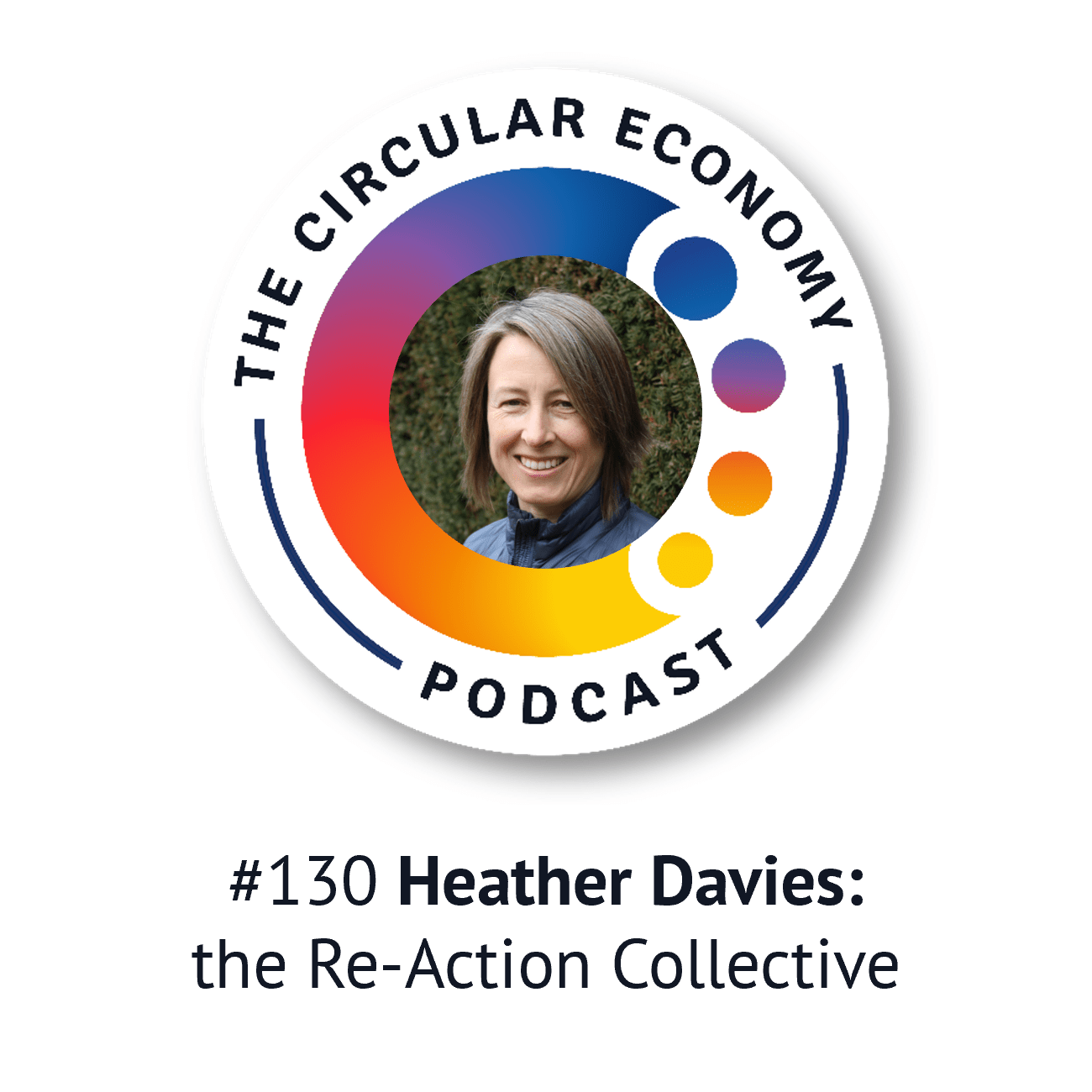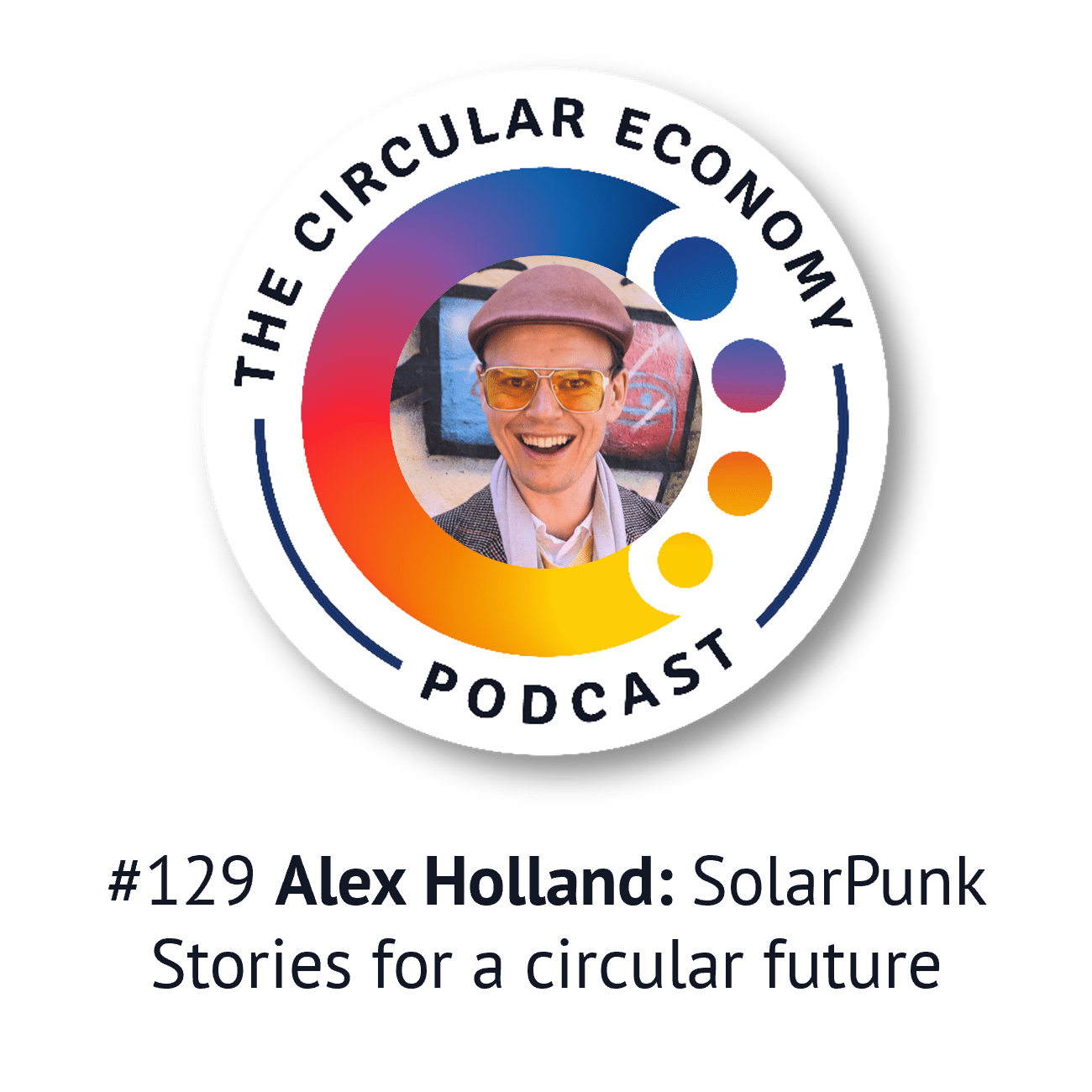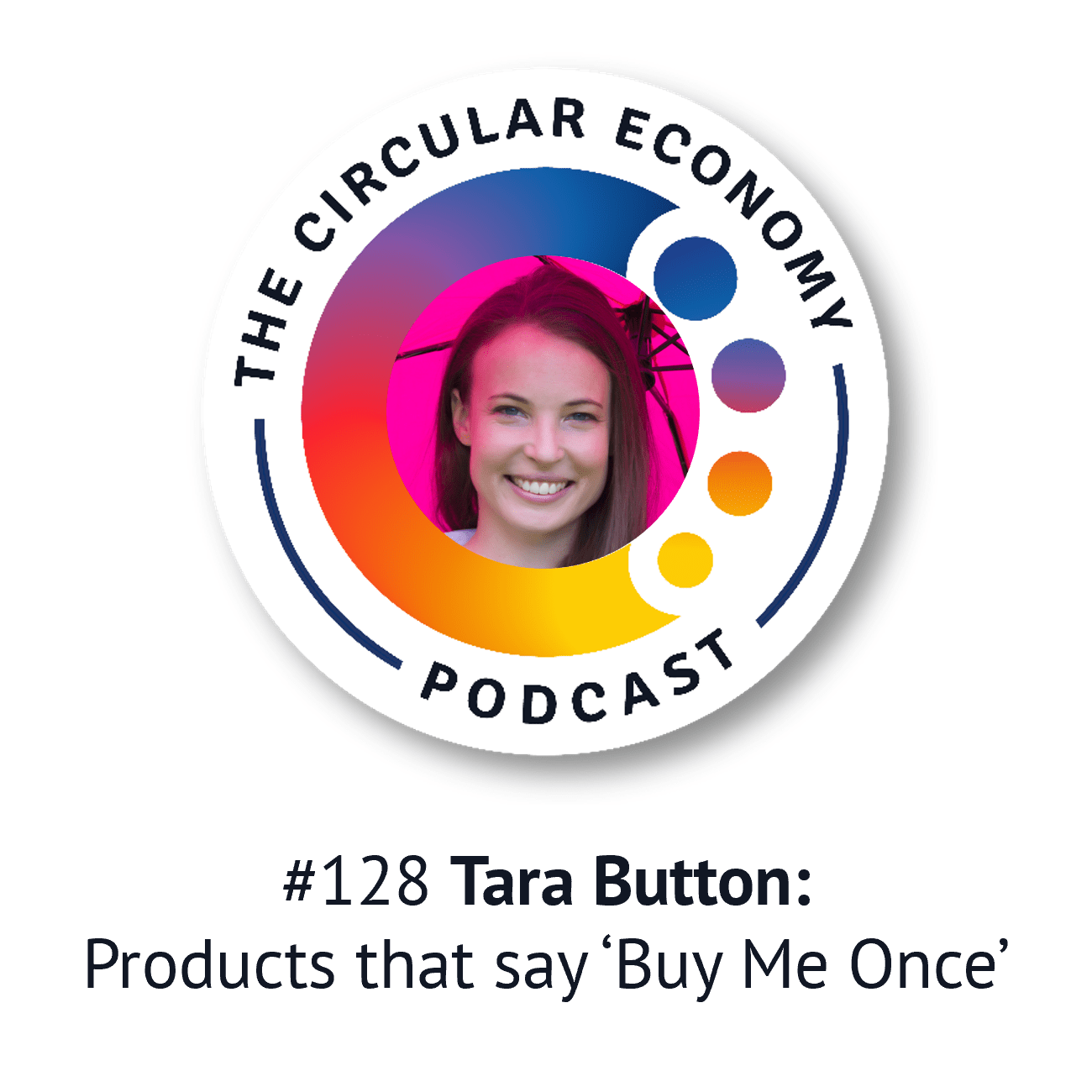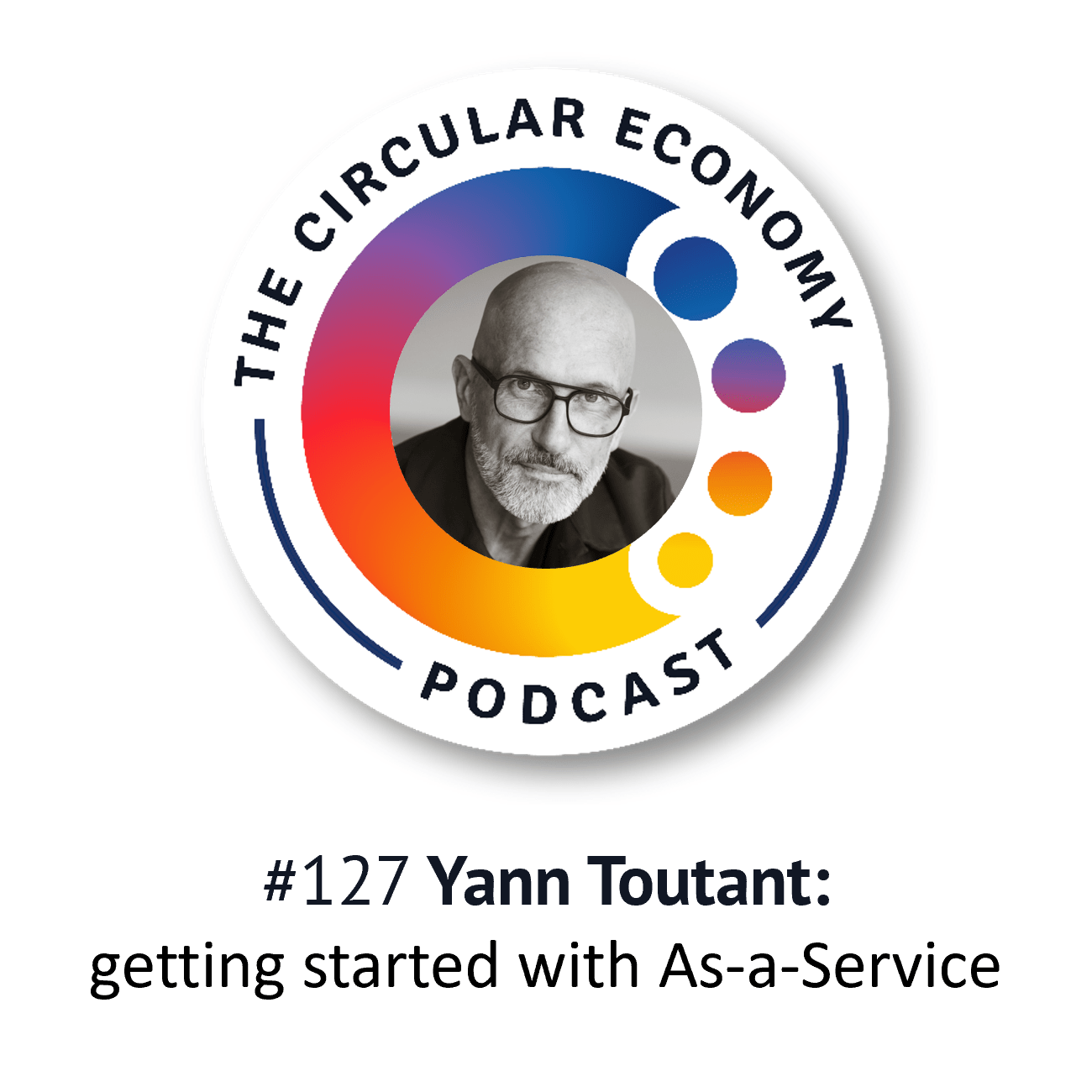Podcast: Play in new window | Download
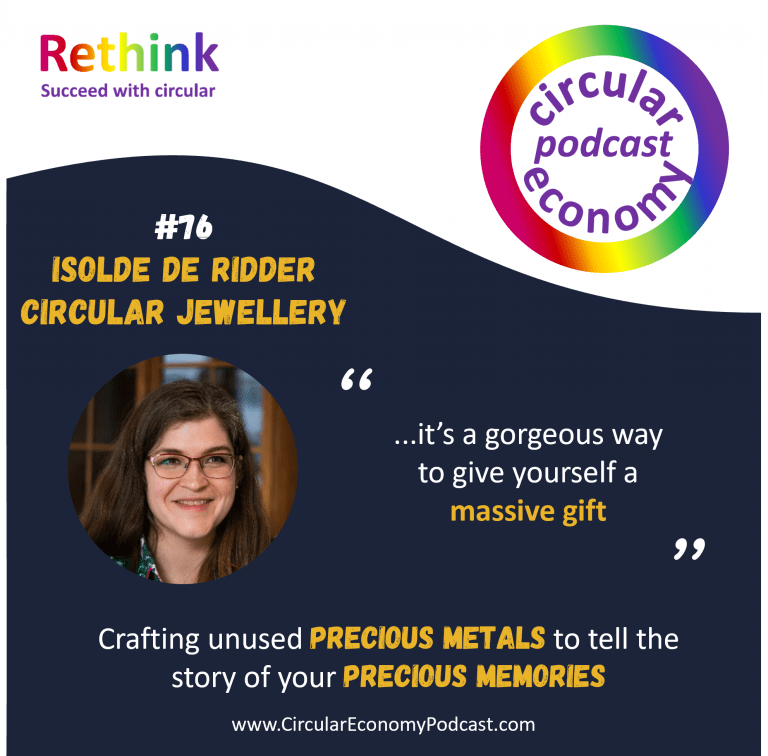
Isolde de Ridder is a circular jeweller and goldsmith. She founded her business – Isolde de Ridder Sieraden – in 2017, to create high-end jewellery with the greatest care for both people and planet. Isolde gives discarded metals and other materials a second life, contributing to a better world for future generations.
Isolde began her education to become a goldsmith in 2006, to combine her passion for gemstones, creativity and working with her hands. She’s inspired by Nature, gemstones, ancient civilizations and also more recent art movements.
We talk about why reusing discarded precious metals is more complicated than it sounds, and how Isolde is encouraging people to bring old jewellery back to life, using her storytelling and design skills to help people repurpose jewellery and other materials into things they will treasure, and that remind them of their loved ones.
Isolde tells us about her early interests, and how they led her to start this business, how she became disillusioned with the ethics of Fair Mined and Fairtrade Gold, and how that sparked the ideas for becoming a circular economy jeweller.
We hear about some of the kinds of jewellery Isolde designs, and how she uses old objects to embed precious memories into the finished product.
Podcast host Catherine Weetman is a circular economy business advisor, workshop facilitator, speaker and writer. Her award-winning book: A Circular Economy Handbook: How to Build a More Resilient, Competitive and Sustainable Business includes lots of practical examples and tips on getting started. Catherine founded Rethink Global in 2013, to help businesses use circular, sustainable approaches to build a better business (and a better world).
Stay in touch for free insights and updates…
Read on for a summary of the podcast and links to the people, organisations and other resources we mention.
You can subscribe to the podcast series on iTunes, Google Podcasts, PlayerFM, Spotify, TuneIn, or search for “circular economy” in your favourite podcast app. Stay in touch to get free insights and updates, direct to your inbox…
Don’t forget, you can use our interactive, searchable podcast index to find episodes by sector, by region or by circular strategy. Plus, there is now a regular Circular Economy Podcast newsletter, so you get the latest episode show notes, links and transcript delivered to your inbox on Sunday morning, each fortnight. The newsletter includes a link to the episode page on our website, with an audio player. You can subscribe by clicking this link to update your preferences.
Links we mention in the episode:
- A Circular Economy Handbook: How to Build a More Resilient, Competitive and Sustainable Business – buy from any good bookseller, or direct from the publisher Kogan Page, which ships worldwide (free shipping to UK and US) and you can use discount code CIRCL20 to get 20% off. It’s available in paperback, ebook and Kindle. If you buy it from online sources, make sure you choose the new edition with an orange cover!
- Sign up to get the podcast player and shownotes for each new episode emailed to your inbox
- Isolde de Ridder – Sieraden website http://www.isoldederidder-sieraden.nl
- Isolde de Ridder – Sieraden on social media : https://www.facebook.com/idrsieraden https://www.instagram.com/isoldederidder_sieraden/ https://www.linkedin.com/in/isolde-de-ridder-le-creurer-561589143/
- Recommended guest Lotte Bink- Voskes. Her website is: https://lottepads.nl
About Isolde de Ridder
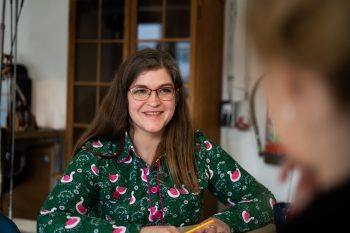 At Isolde de Ridder Sieraden, founded by Isolde de Ridder – Le Creurer in 2017, creating high-end jewellery with the greatest care for both people and planet, is our mission.
At Isolde de Ridder Sieraden, founded by Isolde de Ridder – Le Creurer in 2017, creating high-end jewellery with the greatest care for both people and planet, is our mission.
We strive to make the world more beautiful with our unique jewellery. Our unique pieces are crafted by hand in the Netherlands. Jewellery that gives discarded metals and other materials a second life and that contributes to a better world for generations to come.
Isolde started her education to become a goldsmith in 2006. Her passion for gemstones, working with her hands and creativity were the initial reason to start this education. Nature, gemstones, ancient civilizations but also more recent art movements have always been a great inspiration.
In the past 15 years Isolde developed a love for telling a story in the form of jewellery. Whether it’s a pair of engagement or wedding rings that perfectly describes the loves of a couple, a mourning ornament made out of the jewellery of a lost parent that tell the story of the love of a child for its parents or a birth ornament that is a perfect resemblance of the love of a parent for its child. All are important parts of our lives and these memories deserve to be remembered.
What better way than to remember by means of a beautiful ornament that you can carry with you daily?
Interview Transcript
Provided by AI
Isolde de Ridder
of course, we can start with that. I’ll try to keep it short. I design and make jewellery out of discarded materials. It’s as simple as that.
Catherine Weetman
And you’re at the base at the UpcycleCentrum in Almere. And we’ve already heard from one of the entrepreneurs there. And also, we had a really great interview with Hede Razoky, who’s the customer manager there. And she kind of explained the whole premise of the Upcycle Centrum, which is that it does three things, but one of those things is it acts as a recycling centre centre for the, for the municipality. So people are bringing back waste materials and so on. And the entrepreneurs that it’s supporting are working with specific niches in those waste materials to create something of high value. So it’s definitely not down cycling. No, but your your business struggles a bit with that. Because the well, there is some recycled gold and silver isn’t there coming back in a waste? Yeah, but there are, can you can you explain the issues with with if you know, if you were trying to build a jewellery making business around reclaimed materials, from e-waste, what complexities would that create
Isolde de Ridder
That has been my main focus for the past almost one and a half year, because I thought, since there is quite some precious metals in E waste, I would extract it and just take that and make it into new jewellery. But the precious metals are so embedded and impossible to regain access to them in both small business we, of course, there’s the big E waste companies that process it. And
Catherine Weetman
yeah, and having having equipment worth hundreds of 1000s of pounds, that’s all set up to do it. Yeah,
Isolde de Ridder
to do it. And for me, I found it super challenging to take it back into circulation because it’s a very thin layer or of silver or gold on top of another material which has very similar melting point. So I had, I had hoped that it would be possible to thermally remove the precious metals and discard the rest. So sadly, that was not as easy as I had hoped. And in the past more than a year, I have not been able to regain any precious metals that way.
Catherine Weetman
And it’s not so this kind of goes back to the design of the electronic materials in the first place, doesn’t it and when we’re not going to the details of that, but it kind of speaks to the need for circular design. So designing with the next use in mind making things that are much easier to take apart not you know, try not to blend materials trying to use fixings like in my Fairphone where a single screwdriver will take out the module although that’s still the module it doesn’t get you to the the base metals inside so there are all sorts of issues there. So how have you had to pivot in terms of finding materials to make your jewellery What what are you doing instead?
Isolde de Ridder
Well, first of all, there’s people that g otword that I am one of the entrepreneurs in the Upcycle Centrum. And so they actually handed in their old precious metals, especially silver, it’s way easier to discard of silver than it is to discard of gold because of the value we put on gold. But yeah, so there’s people actually coming to me with a bag full of old silver jewellery, and saying, Hey, maybe you can use this. In the clothing container, there’s very often also jewellery discarded. So the second way I get my materials is digging through all the jewellery that are being brought in. And picking out the ones that I suspect, firstly, that are silver or gold, and then testing them. And if they prove to be precious metals, and we use them.
Catherine Weetman
So so you’re having to be pretty enterprising, aren’t you in terms of spotting waste streams, or encouraging people to think differently about stuff that might be laying in the, in the back of drawers? Or that? You know, Granny left to them 20 years ago, and they’ve never actually worn it? Yeah. And I’m curious to know what what led you to create the business the jewellery business?
Isolde de Ridder
Well, then we go way, way back, because I, I started my education 16 years ago. And I started because I did another, another education first, which didn’t spark any joy when I had finished it. And I thought, if this is what I need to do for a living, for the rest of my life, I’m going to be so unhappy. So I was looking for something that would feed my creative putty would give me the freedom to make my own choices, be my own boss. Still, I enjoy working with people or four people. So that was something that I took into account as well. Now I just started looking through creative education’s. All of them, didn’t appease me, until I was at a wedding had a talk with someone who was in the school for jewellery makers. And at that moment, I was intrigued. And I thought, I’ll just have a look at the school. And I just fell in love with the profession. It’s a, it’s creative, but it’s also technical. So there’s so much to learn out. I think I’ll never get bored.
Catherine Weetman
Yeah, and that’s, that’s a great ambition in life, isn’t it to have a job where you never get bored? That’s yeah, that’s fantastic. And I love the way that you were so clear about what it was you needed from a job? You know, that’s, yeah, that’s it, because I didn’t really discover that till I was in my 40s. So it’s great to hear about somebody kind of starting off on the, on the on a clear, yeah, way.
Isolde de Ridder
I was, I was 21. And I was just not I’d finished my education. And working it was just, it was a dread.
Catherine Weetman
So, so yeah, so that that’s kind of how I had to do something else. So so that that led you to the jewellery making, and the kind of the, you know, the craft and the skills around that. But what about the, you know, making jewellery from waste metals? And where did where did that angle come from?
Isolde de Ridder
Um, in 2017, I started my company. And I had heard that there was the option of working with Fair Trade metals. So I signed up for that. And by the end of 2019, I got a letter from from the company that provided this service, that they would stop this within Benelux. So Belgium, Netherlands and Luxembourg. Because a was not profitable enough. And I thought asking questions is always the best way to expand your knowledge. How How did they come to this decision? Well, it was actually their profits when where I made the decision to work with Fairtrade metals, because I wanted to improve the working conditions and fees were Keep fees for the people involved. But apparently, not enough goldsmiths were making the transition to fair trade. So within, within the Netherlands, they stopped. So I had a look into the new company that rose up for this demand, which is called Fair Mined. And I discovered that it’s mainly white people working under absolutely better conditions, and earning decent Western fee for their labour. But still, it does nothing for the people that inhibits the country, or the area where the gold is found. So it still didn’t feel very fair to me. And in my research, I also discovered that, well, we’re depleting the earth quite fast and quick, from from what we have, or the materials that are available. And yes, I just heard recently, we discovered a new vein. But and we’ll probably keep on discovering new veins in natural environments that we just better leave alone. So that’s when, at the end of 2019, with the research I was doing, I came to the conclusion that I was not okay with being a part of that anymore. So I came to a turning point. Do I want to keep on doing the work I do? Or am I going to go in a completely different direction, because this doesn’t sit well with me at all. And this is not how I want to contribute to earth, and the people inhabiting it. So I started puzzling on how to not use fair mind, not use new materials, because that might be considered even worse. And the only conclusion I came to is, there’s so much jewellery in everyone’s possession, just lying around doing nothing. And it’s so easy actually to renew the metals and make new stuff out of it. That I saw this as, as my only option to keep on doing what I love doing. Yeah,
Catherine Weetman
there’s a professor in Cambridge, who’s done calculations to say that we already have enough steel in the world to never need to create any more steel. And I think there are probably lots of other metals, minerals resources, that we could look at differently and look at how can we do something with what we already have? And of course, that’s at the heart of the circular economy, isn’t it? So that was
Isolde de Ridder
I discovered that about a couple of months after I made the decision to work solely with discarded materials. So I discovered February 2020, there was actually a term for what I wanted to do, right. I was at a festival which was, which is held yearly, in the on later. I had a couple of talks with other circular entrepreneurs. And he was such an inspiration to see that I was not the only one trying to save the planet and do that in a way that it is. Well, causing less impact. I will never say I don’t cause any impact because yes, I still work with chemicals. I still work with gas to heat up the metals. So yeah, there’s no no guarantee it’s zero emission. But I’m very conscience of bad contribution you make with another decision.
Catherine Weetman
Yeah, and I think it’s, it’s another one of those circular economy businesses, you know, that might be a solopreneur or a very small micro business. But what it’s helping to do is start conversations with people, people who hadn’t ever thought that you know, something could be made from recreated by recreating using the resources that we already have. And realising that the story around that is is more interesting than the thing that you’ve just walked into a standard jewellers, jewellers and book from the shelf. And that that they probably then tell that story to so many more people because it’s more uplifting
Catherine Weetman
I think it’s so important to get those stories out there and to help lots of other people think differently about this the value in what we already have, and the value of keeping the legacy going, even if you recreate the material into something new, the still the legacy there and the story there, and the fact that every one of your customers has done something to help make a better world and, you know, reduce our impact on the world. So I think it’s, it’s, it’s really important. So,
Isolde de Ridder
and I never expected that I would change the world with what I’m doing. I just want to change the mindset of people.
Catherine Weetman
Yeah, and I’m, and I’m sure, I’m sure you’re doing exactly that. And I think the power of these stories, you know, there’s a lot more energy in those stories, and people tell somebody else who then just just as happened with people suddenly getting to hear what you were doing and bringing you silver, you know, people like to spread interesting stories and good news, and particularly like to spread stories of things that are better for people and planet. And that’s what that’s what we need more of is more of those stories and more of people starting to think differently. Because the way we’ve been educated by marketers and big businesses isn’t the only way that we can live and work. You know, there are different ways and those ways can be more fulfilling and sometimes cheaper and more interesting and all the rest of it. So that that brings us on to the you know what, tell us a bit about what kind of jewellery you you make and what kind of old items have come into your hands. Tell us a few a few stories about that.
Isolde de Ridder
Well, I’m not sure if I can take this as one of the examples but I’m actually having conversations with you and your husband to renew your wedding rings because he lost his and so I I’m working on with both of you to figure out first of all a good design and then I have old white gold because because the rings will be white gold again. All the white gold that I stocked up on because I was able to get my hands on some and yeah, so your rings will be made from someone else’s old jewellery plus, plus combined combined with my combined with your own wedding ring, my wedding
Catherine Weetman
ring that wasn’t low and was fair trade
Isolde de Ridder
and will still complement the story you’ve had so far. And that yeah, I love I love weaving the stories into the jewellery. Last year I had another customer that had quite some old gold from his mother and his father lying around with old fashioned designs so no one was wearing them and I made it into a bracelet very modern very finding not the word right now how do you say that? Very manly. Yes, yeah. And in this bracelet, and maybe we should redo this whole part, I don’t know. But in this bracelet, there’s, there’s the stone a gemstone from his dad’s ring, the ring here, his dad wore for ages, he, as long as he remembered his that was wearing this ring. And so it got a special place in the bracelet. Because, well, that is something that is the legacy of his parents. But now he can walk around with it on a daily basis.
Catherine Weetman
Yeah, that’s so such a nice story, isn’t it about finding a way to, again, get something out of the back of the drawer, or even worse being sent off to auction because you can’t think of a way of, of, you know, of using it. And it’s just, it’s just laying there forgotten, but suddenly having something from somebody very close to you. And something that was precious to them? To stay with you. Yeah. So, yeah, and I’m sure there are, I’m sure. It really gets people’s imagination going about how they can have something that reconnects with their heritage, jewellery and that kind of thing. Yeah.
Isolde de Ridder
Yeah. And that is, if you ask me one of the most, well, precious things you can do with precious metals that are lying around. Turn them into something that has current value again.
Catherine Weetman
Yeah, so and current value, not just, yeah, sorry.
Isolde de Ridder
This is this is not just the value of the piece of jewellery itself, but also the value of your heritage, being able to take that with you, literally, on a daily basis, we all walk with our heritage, metaphorically, but they say is a tangible thing that you can do with the, the rings that your grandma left behind, or the wedding rings of your grandparents. And I, I think it’s it’s a gorgeous way to give yourself a massive gift. And the people on the planet at the same time.
Catherine Weetman
Yeah, that’s a lovely way to put it. And I think you know, that there is so much value isn’t there in the story behind something and knowing that that story goes back beyond just your decision to to acquire something, but that that story can go back? Whether it’s your own heritage, or somebody else’s heritage that you’re now you know, keeping in, in, in, in use and allowing it to be cherished and looked after and so on. And yeah, I’m guessing the jewellery industry generally, I’m guessing it’s getting a bit like fast fashion. That you know, you can’t have too many too many watches and you can’t have too many bracelets, rings and all the rest of it. And the idea is to just keep keep consuming with whatever this quarter’s look is. So what other issues does that does that bring with it is is the jewellery industry overall, doing anything to improve its impact? So on the planet
Isolde de Ridder
I can I can just speak for the Netherlands because I have to be honest, I didn’t look into other countries, but I’m looking into what they are doing here in the Netherlands. Yes, they are absolutely making an effort they have in 2012, if I’m not mistaking, made a confident that they want to recycle 50% of the precious metals by 2030. And as I hear around me from other Goldsmith, most of them find this beautiful and ambitious and, and I am a bit disappointed, because I think, by 2030, if things are going the way they’ve been going for the past decades, we’ll have depleted the gold reserves and everyone keeps on saying no, we’ll probably find a new vein here or there. But I keep on repeating at what cost, exactly, it’s going to be in the middle of a village, then the village has to move, which I think is unacceptable. If it’s in the middle of a new nature reserve. They don’t care, they’ll just take everything down to get to the gold and destroying the planet for something that we have plenty of is unacceptable to me. So having a goal that in a year’s time, will recycle 50% Yeah, I find it disappointing. I thought it would be definitely possible to have 100% coverage by 2030.
Catherine Weetman
Yeah. And it’s it’s a great point, isn’t it? That, you know, we’re wrecking so many communities and precious ecosystems for something that particularly from the jewellery and watch point of view. You know, isn’t isn’t a necessary part of our lives. And we’ve got so many other ways of reusing what’s already there. And it’s an it’s an it’s not that hard. So it would be good to have a lot more ambition from from the kind of the wider industry. So it’s older, what, what have you struggled with and what surprised you in the process of building your business so far?
Isolde de Ridder
Um, what have I struggled with let’s start with that one, then we end on the happier note. I’ve mainly struggled with the regaining of precious metals. So there, there’s two things I encountered. The first I thought the E waste would be a good source. But it’s nearly impossible to regain precious metals on small scale without big environmental impact. This is one side of it. The other side is people have a lot of trouble partying, you with the jewellery, they don’t views. Because, and I think this is recognisable for everyone, their stories attached to them. But taking those stories and turning it into a new story is costly. Mainly because I work for a European fee. You put my hours into it. I have discussions with people on their wishes and all of it is time consuming, which I love doing. Don’t get me wrong. But for many people, it means that having something made for them is out of reach. And this is something I hear a lot. People are shocked with the prices charged for a custom made piece. And that that is also if it’s not custom made, I’m still working quite some hours to go through all the waste. That is handed to me by the municipality. It takes me up to three hours a week to sift through everything. And if I’m lucky, I’ll find 10-15 grammes of silver in a week.
Catherine Weetman
Wow.
Isolde de Ridder
Which is one, maybe two new pieces of jewellery and then the whole process of making it into new jewellery also comes on top of things labour so people are shocked with The prices of the jewellery and I think, well, we’ve been spoiled in a negative way. Because if you buy something new from a jewellery shop, nine out of 10 times it’s manufactured abroad – outside of Europe, wages and working conditions are poor. So as I tried to keep on telling people, there’s always someone paying the price for this. And if it’s not you, then it’s someone else. And if it’s someone else, it will generally be with poor living conditions, poor wages, poor working conditions. And this is a price I’m not willing to pay for it.
Catherine Weetman
Yeah, that’s interesting. And it’s so similar to mainstream, fast fashion as well, isn’t it that, you know, when when we pay less for something, it means somebody or something is being exploited. But those stories are so you know, covered up that it’s, it’s hard for the average person to get to see what’s what’s really happening. It’s also opaque. The city of New York is has put some legislation into place that covers all fashion brands, insisting that they make their supply chain transparent. So that’s quite interesting that a city municipal municipality is insisting on that. And it could be groundbreaking, in terms of, you know, really highlighting the reputation risk that some of these brands have from continuing with the poor practices. So, okay, so and then has it been a good surprise? You said you were going to save the nice bit of that question to the end? Well,
Isolde de Ridder
yeah, because I also encounter more and more people that are aware that they have precious materials lying around doing nothing. And it’s in their eyes, a good idea to renew that, and blow new life into it. So it’s a will be not gathering dust anymore, it will be something they, they appreciate the love wearing. And because there’s a start of people making these decisions, there’s also they’re an inspiration for other people to do the same. And that’s, that’s something that is gorgeous to watch. In the past two years, I’ve gotten more and more customers that consciously make the decision to buy jewellery that are, well upcycled recycled, and the conscious decision to go for something that is more sustainable, and more. Taking your environment and other people in the planet into account. Is is growing?
Catherine Weetman
And are those people finding you through word of mouth or through visiting the Upcycle Centrum itself? How is that? How is your market growing?
Isolde de Ridder
I think a bit of both, I think it’s both the mouth to mouth. Because if someone is very happy with the new piece, they they picked up, they’ll tell a friend. And so my name goes around. But also the municipality makes us meses. Well, makes us sound sounds like we have to but gives us the opportunity to show what we do to a broader public. Yeah. And that is also creating consciousness. And it doesn’t happen overnight. But yeah, very often people after a couple of visits on an open open house, they do become a customer. So it does absolutely help that the municipality of Almere is helping circular entrepreneurs to a bigger exposure bigger public.
Catherine Weetman
Yeah, I think it’s it’s such a brilliant idea. And, you know, every city and town around around the world could be doing something similar. It’s so inspiring. And so if you were talking to another business that wanted to aren’t something circular or go more circular? What would your top tip be isolde?
Isolde de Ridder
Oh, tricky one. Don’t get too caught up in your research. This is what happened to me. I spent months and months on researching and researching more. And the more I got to know, the firmer my my wrestle no to the way things are going became, which is a good thing. It straightened out my story quite well. But I didn’t produce any work. I was so caught up in the knowledge. And the more you get to know, the more knowledge will be available, it’s no more thing horrible. It’s a great, great thing that if you know where to look and how to dig, that you’ll dig up dirt that will definitely make you see that this is the right decision. But it took me way too much time.
Catherine Weetman
Yeah, I know, I know that well going down all those those really interesting rabbit holes. Yeah, on the on the way to finding what you actually need to know. And so I’m sure I will, I can I can sense that you have deeply held and and you know, very considered a set of values, personally and in in business. So which one of those values would you share? And, you know, that, that you think would help people make move us towards a better world?
Isolde de Ridder
For me, it’s a love for the planet, and the people inhabiting it. Yeah. I deeply love life on Earth. And I want to look myself into the eye in 20 or 30 years, and say, I helped make this a better place for my children for hopefully the children of my children. And if I take it in a broader, hopefully children that are now unable to go to school, educate themselves become the person they’re supposed to be in my eyes. It’s just not my kids. It’s actually all the kids in the world. And I wish a day inherit a planet that is still wonderful. Yeah, not barren and depleted. But they have a joyful life. In a beautiful environment.
Catherine Weetman
Yeah. Yeah. I love that. And I think this concept of keeping what we have in use, shows us that we if we get creative, and often that creativity is that the level of the of the person that you know, the person wanting the thing, as well as the person creating it. But those, that creativity and that thinking differently, gives us more joy, in terms of creates more value from what you’re doing and gives you a spark and so on. So, there are just so many, so many benefits, to to doing things differently, instead of being manipulated by big brands to think that, you know, if we only buy this, our lives will be so much better. And within you know, within a few minutes, we realise it’s, it’s not actually made any difference. So, it’s older, who would you recommend as a future guest for the programme.
Isolde de Ridder
Um, I puzzled on that one and I am going to recommend one of my dearest friends. She’s an entrepreneur, so a mum-boss, as we like to call ourselves. And she has a company in washable panty liners and sanitary products, right.
Catherine Weetman
Wow. And she is in the Netherlands.
Isolde de Ridder
She is she’s not in Almere sadly for me, but quite close by. Yeah.
Catherine Weetman
So what what’s her name and her and her business name?
Isolde de Ridder
Her company’s called Lotta Pads
Isolde de Ridder
Her actual name is Lotta
Catherine Weetman
okay.
Isolde de Ridder
Yeah. And I think it would be great. Every woman needs sanitary products monthly, starting the age of well might even be 10 or 11. And if we can reduce the waste from that. And at the same time she, she has the happiest prints. So when you are most down in your month, yeah, she calls it, you have a party in your pants, put a smile on my face every month. This is something I think every woman needs for because it’s dreadful enough to have your period. And if you can make it a happier period for yourself – in this case, it is a great gift.
Catherine Weetman
Yeah,
Isolde de Ridder
but you also save environmental. If you don’t contribute to waste in this way, I think it’s a big bonus.
Catherine Weetman
Absolutely. And it’s another one of those just, you know, thinking about things differently, and suddenly a whole new way of doing things opens up, you know, that it’s, it’s it’s just habit that we’ve been educated towards. And just thinking differently about it can can enable us to make really rapid changes. So it’s older, how can people find out more and get in touch, if they want to do just as just as I’m doing and commissioned you to recreate or create from scratch some some jewellery.
Isolde de Ridder
I have a website, which is mainly in Dutch. I’m working on an English version, but it’s challenging. Because being a solopreneur, I tend to do everything myself. So I always have to figure out where to find the time to update the website or launch a second website in English or it’s time consuming, but it’s www.isoldederiddersieraden.nl. I think.nl.
Catherine Weetman
Yeah, great. Well, we’ll put that link in the show notes. And I guess people whilst whilst I try and boycott Google people could always use Google Translate to get a feel for what you’re doing. But I’m I’m sure there’d be lots of people in the in the Netherlands who hear this and be interested in in exploring what you’re doing. So it’s older. Thank you so much for sharing the story of Isolde de Ridder Sieraden and yeah, I’m looking forward to continuing the conversation about our wedding rings, and particularly the logistics of getting them back, which we know is a challenge. But yeah, thank you very much.
Isolde de Ridder
You’re so welcome. It was a pleasure.
Want to find out more about the circular economy?
If you’d like to learn more about the circular economy and how it could help your business, why not listen to Episode 1, or read our guide: What is the Circular Economy?
To go deeper, you could buy Catherine’s book, A Circular Economy Handbook: How to Build a More Resilient, Competitive and Sustainable Business. This comprehensive guide uses a bottom-up, practical approach, and includes hundreds of real examples from around the world, to help you really ‘get’ the circular economy. Even better, you’ll be inspired with ideas to make your own business more competitive, resilient and sustainable.
Please let us know what you think of the podcast – and we’d love it if you could leave us a review on iTunes, or wherever you find your podcasts. Or send us an email…
Podcast music
Thanks to Belinda O’Hooley and Heidi Tidow, otherwise known as the brilliant, inventive and generous folk duo, O’Hooley & Tidow for allowing me to use the instrumentals from the live version of Summat’s Brewin’ as music for the podcast. You can find the whole track (inspired by the Copper Family song “Oh Good Ale”) on their album, also called Summat’s Brewin’. Or, follow them on Twitter.
